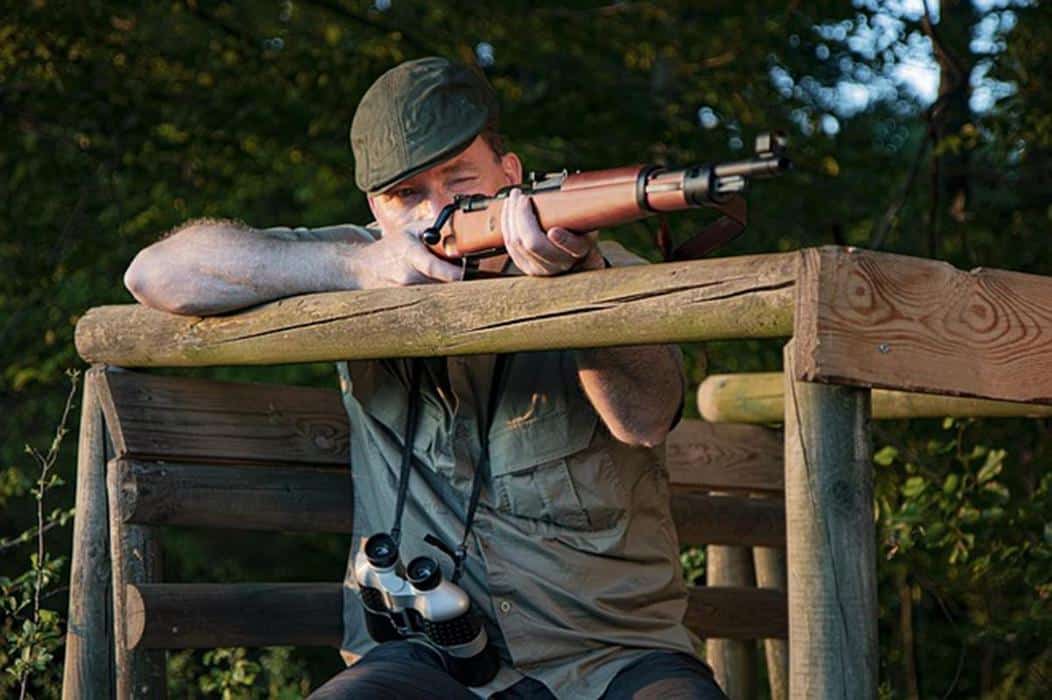 In this post today we are dealing with Nikon Prostaff 3s vs 7s.
In this post today we are dealing with Nikon Prostaff 3s vs 7s.
Whether you’re an outdoor enthusiast or simply looking to get a better view of a game when you go to a sports event, a decent pair of binoculars can provide you an awful lot of pressure.
However, you should be careful when deciding which optics equipment to go for. Are you looking for best binoculars set that’s easy to carry around? Or would you like the one that has the best field of view?
One optics brand you can never go wrong with is Nikon. This manufacturer has proven to be a brand you can rely on for telescopes, binoculars, and more.
In particular, their Prostaff line of binoculars is a favorite for many outdoorsy individuals. In this, we’ll review two of the Prostaff binoculars: 3s and 7s.
Checkout Prostaff 7s From Amazon
|
Features |
||||
|
Magnification |
8 |
8 |
10 |
10 |
|
Objective lens |
42mm |
42mm |
42mm |
42mm |
|
Real field of view in degrees |
7.2 |
6.8 |
7.0 |
6.2 |
|
Field of view at 1,000m |
126 |
119 |
122 |
108 |
|
Exit pupil (mm) |
5.3 |
5.3 |
4.2 |
4.2 |
|
Eye relief (mm) |
20.2 |
19.5 |
15.7 |
15.5 |
|
Prism type |
Roof |
Roof |
Roof |
Roof |
|
Close focusing distance (m) |
3.0 |
4.0 |
3.0 |
4.0 |
|
Weight |
565 |
650 |
575 |
645 |
|
Amazon product page |
Nikon Prostaff 3s vs 7s: Let’s clear the smoke
Design and build

The Prostaff 3s and 7s look fairly similar when it comes to their build. With both binoculars, their chassis are constructed from polycarbonate resin, which is both lightweight and resistant to corrosion.
They’re also equipped with a rubberized armor to provide a secure grip, especially if you’re using the optics equipment in wet conditions.
Similarly, the 3s and 7s have their optical tubes filled with nitrogen and sealed with o-rings for fog proof and waterproof capabilities. Their eyecups are covered with a tethered single-piece rain guard to prevent the entry of rainwater or other liquid that could damage the lenses.
Also worth pointing out is that the rubber eyecups have a turn and slide mechanism, which makes for easy adjustment and positioning.
Despite these similarities, these binoculars differ in weight. To illustrate this concept, we’ll compare two of their products: the 8×42 and 10×42.
In the case of 3s binoculars, the 8×42 weighs 565 grams while the 10×42 weighs 575 grams. As for the 7s, its 8×42 weighs 650 grams while the 10×42 weighs 645 grams. So if you prefer a lighter model, the Prostaff 3s is a better option.

Another area where the two differ is in color variations and eye relief. Unlike Prostaff 3s that’s only available in a black hue, you can get the 7s in a camo pattern. This feature is beneficial to hunters who would want to blend into the background.
As for the eye relief, the Prostaff 3s 8×42 really shines offering 20.2 mm eye relief. This way, you’ll be able to view a full image even if you’re wearing glasses. The 8×42 model of 7s doesn’t fall too far behind as it has an eye relief of 19.5mm.
If you like mounting your binoculars on a tripod, you’re better off choosing Prostaff 7s instead of 3s. The base of the 7s is designed to fit perfectly on any standard tripod. Unfortunately, Prostaff 3s binoculars is lacking in this aspect.
Lens
Both Prostaff 7s and 3s have roof prisms meaning their objective lenses align with their eyepieces. This in turn, results in optics equipment that is lightweight, compact and easy to hold.
Another similarity in their lenses is that they are multi-coated. Their lenses and prisms feature multi-layered coatings that boost light transmission, resulting in bright and clear images.
That said, the Prostaff 7s has one extra feature that makes it superior to 3s model. The prisms on the 7s are reinforced with phase correction coatings that further enhance resolution.
Due to this, the images you’ll see with Prostaff 7s will be much brighter than those of the 3s. This feature also boosts its nighttime prformance.
When we tested the binoculars using indoor lighting, the 3s showed strong neutral-bluish reflections. By contrast, the 7s showed only faint purple or green reflections. This means that Prostaff 7s performs well all-round; whether it’s daytime, night time or in dim light.
Both Prostaff 7s and 3s have 8x and 10x magnification power. However, it’s the 7s that give you more variety when it comes to the objective lens. You can choose from an objective diameter of 30 mm or 42mm. The Prostaff 3s is only available in 42mm diameter.
With a smaller objective diameter, you won’t have too much weight weighing you down especially if you’re carrying hunting gear. But if you don’t mind the additional weight, a 42mm is the most preferred. Not only does it offer higher magnification, but it also boasts a wider field of view (FOV).
Speaking of the FOV, that of the Prostaff 7s stands at 119 m at 1000 m while the 10×42 offers 108 m at 1000 m. By comparison, Prostaff 3s 8×42 has a field of view of 126 m at 1000m and 122 m at 1000m for the 10×42 model.
Prostaff 3s wider field of view offers an advantage in that it helps you spot things more easily without moving your optics equipment too much.
Overall, the full-size binoculars such as Prostaff 7s 8×42, 10×42 and the 3s 8×42, 10×42 models are great for serious wildlife viewing, hunting, and boat adventures. The mid-size models of the 7s (8×30 and 10×30) are fit for all-round use; be it watching wildlife or for sports use.
The last noteworthy feature relating to the lenses is the exit pupil. Here, the Prostaff 7s and 3s have similar sizes, that is, 5.3 mm for 8×42 models and 4.2 mm for 10×42 models.
The exit pupil size is large enough to help you see clearly in low-light conditions. But as mentioned earlier, Prostaff 7s has a better performance in such conditions.
Features
One thing we like about Nikon is that they provide numerous accessories alongside their binoculars. With Prostaff 7s and 3s binoculars, you’ll get 1 strap, 2 objective lens caps, a soft case, and an eyepiece cap.
Another aspect that causes many to rely on this brand is its generous limited warranty of 25 years. This is backed by a “No-Fault” lifetime warranty.
An important point to note though is that Prostaff 7s is pricier than Prostaff 3s. So if you’re looking for simple, no-frills binoculars, the 3s will suffice.
Overall, the Prostaff 7s and 3s are suitable for a wide range of applications. Whether you’re going sightseeing in the Grand Canyon, attending a live concert or watching a football match, these optics equipment will really come in handy.
Similarities and differences
Similarities
- Nitrogen-filled and o-ring sealed for fog proof and waterproof build
- Have the same exit pupil size
- Backed by long warranties
- Available in 10x and 8x magnification strength
Differences
- Prostaff 3s is lighter by a few grams
- Prostaff 3s has a longer eye relief of 20.2 mm compared to 19.5 mm of the 7s
- Prostaff 7s allows you to mount on a tripod; the 3s doesn’t have this feature
- Prostaff 3s is only available in black while Prostaff 7s comes in black and camo patterns
- Prostaff 7s roof prisms are reinforced with phase-correction coatings while the 3s aren’t
- Prostaff 3s has a wider field of view at 126 m per 1000 m
- Prostaff 7s comes with 30 mm or 42 mm objective diameter
Pros and Cons
Prostaff 3s pros
- Easier to carry thanks to its lightweight design
- Has a longer eye relief; hence more suitable eyeglass wearers
- Offers a wider field of view
Prostaff 3s cons
- Lacks phase-correction coatings on its roof prism
- Lacks a tripod mount
Prostaff 7s pros
- Available in a camo color that’s great for hunting purposes
- Produces brighter images, especially in low-light conditions
- Can choose between 30 mm and 42 mm objective lens sizes
- Comes with a tripod section for easy mounting
- Phase-correction roof prism that boosts light transmission
Prostaff 7s cons
- It’s heavier; hence not as portable as Prostaff 3s
- Smaller eye relief; might not be ideal for some eyeglass wearers
Final verdict
The clear winner between these two binoculars is Prostaff 7s. Though it comes at a higher price, it also offers more features that justify the investment.
For instance, it’s available in a camo pattern, which makes it perfect for your hunting expeditions. You can easily blend with the background and sneak up on your prey. The Prostaff 7s also have phase-correction multi-coated prisms that result in brighter images.
While Prostaff 7s is perfect for hunters, Prostaff 3s is designed for bird watchers and tourists who like observing wildlife.
The Prostaff 3s binoculars have a longer eye relief, meaning they’re more suitable for eyeglass wearers. They also have a larger field of view at 126 m per 1000 m. In contrast, Prostaff 7s have a FOV of 119 m per 1000 m.
Related Post:
Nikon Prostaff 7 vs 7S: Know These Differences Before You Buy



